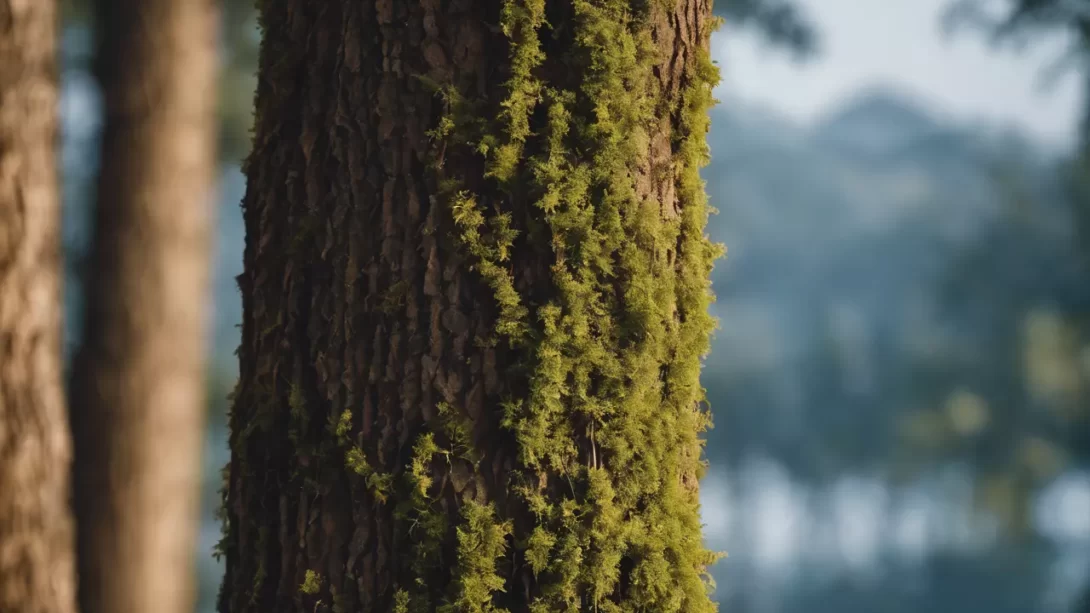The world of trees, with its towering presence and intricate biology, holds many secrets and insights for those who seek to understand it. One of these secrets lies within the subtle boundary known as the drip line. The drip line of a tree is an abstract yet essential concept in the realm of arboriculture. In this article, we embark on a journey to explore the intriguing world of the drip line and uncover its significance in tree care and landscaping. By understanding this concept, we gain valuable insights into how trees interact with their environment and how they rely on the invisible guidance of the drip line for their well-being.
What Is the Drip Line?
The drip line of a tree is a vital element in the study of trees and their ecosystems. It is not a physical line but rather an imaginary boundary that encircles a tree’s canopy. This boundary represents the outermost edge of the tree’s branches and foliage. What makes the drip line particularly intriguing is its role in collecting and channeling rainwater and moisture. As rain falls upon a tree’s leaves and branches, it naturally flows to the outermost tips, following the path of least resistance. At the drip line, the moisture falls to the ground in a manner akin to raindrops dripping from an umbrella’s edge.
Why the Drip Line Matters
Understanding the drip line is of paramount importance in the realm of tree care and horticulture. This concept matters for several compelling reasons:
- Moisture Distribution: The drip line is where the tree receives the majority of its moisture. This is where rainwater is channeled to the ground, and where many of the tree’s absorbing roots are located. By recognizing this boundary, arborists and gardeners can ensure that trees receive the water they need for proper growth and hydration.
- Nutrient Distribution: The drip line also plays a significant role in the distribution of nutrients. Falling leaves and organic matter accumulate in this area, providing the tree with organic material that enriches the soil and supports its health.
- Root Growth: Trees often develop an extensive network of roots within the area of the drip line. These roots, known as absorbing or feeder roots, are crucial for water and nutrient uptake. Care and maintenance within the drip line are essential to protect these roots and, in turn, the overall health of the tree.
Understanding the importance of the drip line offers a window into the intricate relationship between trees and their environment. It guides arborists, landscapers, and tree enthusiasts in making informed decisions that support the well-being and longevity of these majestic natural giants. In the following sections, we will delve deeper into the practical aspects of identifying the drip line, its role in landscaping, and the measures to protect and care for trees within this significant boundary.
How to Identify the Drip Line
Identifying the drip line of a tree is a practical skill for anyone involved in tree care or landscaping. While it’s not a physical line, there are several methods to determine where the drip line lies for a particular tree:
- Shadow Observation: A straightforward way to estimate the drip line is by observing the tree’s shadow. The area covered by the shadow at a specific time, especially when the sun is directly overhead, can help you visualize the outermost reaches of the canopy.
- Leaf and Branch Accumulation: Fallen leaves, twigs, and branches often accumulate at the edge of the canopy. This accumulation can be a good indicator of the drip line’s boundaries. Over time, the accumulated debris forms a natural border that mimics the drip line.
- Overall Tree Shape: The overall shape of the tree provides hints about the drip line. Most trees tend to spread their branches to maximize their exposure to sunlight. By examining the tree’s shape and symmetry, you can estimate the extent of the drip line.
- Moisture Accumulation: Pay attention to the ground around the tree after rainfall. The area where you notice moisture accumulation or puddles forms a clear boundary of the drip line, as this is where the rainwater from the canopy is directed.
Understanding the drip line’s location is essential for making informed decisions about planting other vegetation or installing hardscapes in the vicinity of the tree. It ensures that these additions do not interfere with the tree’s water and nutrient uptake.
The Role of the Drip Line in Landscaping
The drip line plays a pivotal role in landscaping decisions, as it influences how we design and maintain outdoor spaces. Landscapers and gardeners often consider the drip line when planning the layout of gardens, walkways, and hardscapes. Here’s how the drip line affects landscaping:
- Planting Choices: The area within the drip line is typically conducive to growing a variety of plants. Gardeners often select species that thrive in the dappled shade created by the tree’s canopy. This makes the space beneath and around the drip line an ideal location for creating shade gardens and underplanting with shade-tolerant species.
- Hardscapes and Structures: When installing hardscapes like patios, walkways, or outdoor seating areas, it’s crucial to consider the drip line. Avoiding construction within this zone helps protect the tree’s root system, prevent soil compaction, and maintain healthy soil conditions.
- Mulching and Ground Cover: Mulching around the drip line not only conserves moisture but also supports the health of the tree by insulating the soil and regulating temperature. Choosing the right ground cover, such as leaf litter or organic mulch, within this area contributes to the tree’s overall well-being.
In essence, the drip line’s influence on landscaping decisions is a testament to the interconnectedness of nature and the designed elements of our outdoor spaces. By respecting the boundaries set by the drip line, we can create harmonious and thriving landscapes that embrace the presence of these magnificent living beings while also enhancing the aesthetics of our surroundings.
Protecting and Caring for Trees Within the Drip Line
Protecting and caring for trees within the drip line is essential to ensure their health and longevity. Here are key considerations when tending to trees within this significant boundary:
- Avoid Soil Compaction: Heavy foot traffic or construction equipment within the drip line can compact the soil, reducing aeration and hindering root growth. Implement measures to minimize soil compaction, such as installing protective barriers or limiting access to this area.
- Proper Watering: Recognize that the drip line is where the majority of rainwater is channeled to the ground. Supplemental watering may be required during dry periods to ensure that the tree receives adequate moisture, especially during the growing season.
- Mulching: Apply a layer of organic mulch, such as wood chips or shredded leaves, around the drip line. Mulch helps retain moisture, regulate soil temperature, and inhibit weed growth while providing essential organic matter for the tree.
- Pruning and Maintenance: Regularly inspect and maintain the tree by pruning dead or damaged branches and ensuring proper air circulation within the canopy. This not only promotes the tree’s health but also prevents potential hazards from falling branches.
- Protection from Construction: If landscaping or construction work is planned near a tree within the drip line, consult with an arborist or tree care professional to ensure the tree’s safety. Proper precautions, like root barriers or strategic placement of protective fencing, can help safeguard the tree during such activities.
Conclusion
The drip line of a tree is not merely an abstract concept but a boundary that guides our understanding of tree care and landscaping. By recognizing the significance of the drip line, we gain insights into the delicate relationship between trees and their environment.
Understanding the drip line empowers arborists, gardeners, and landscapers to make informed decisions that support tree health and vitality. It is a reminder that nature and human design can coexist harmoniously, as long as we respect the boundaries set by the trees.
In the world of trees, the drip line serves as a bridge between the visible and the unseen, a connection between the tree’s canopy and its hidden root system. By protecting and caring for trees within the drip line, we not only ensure their well-being but also foster a deeper appreciation for these majestic, life-sustaining giants that grace our landscapes.




